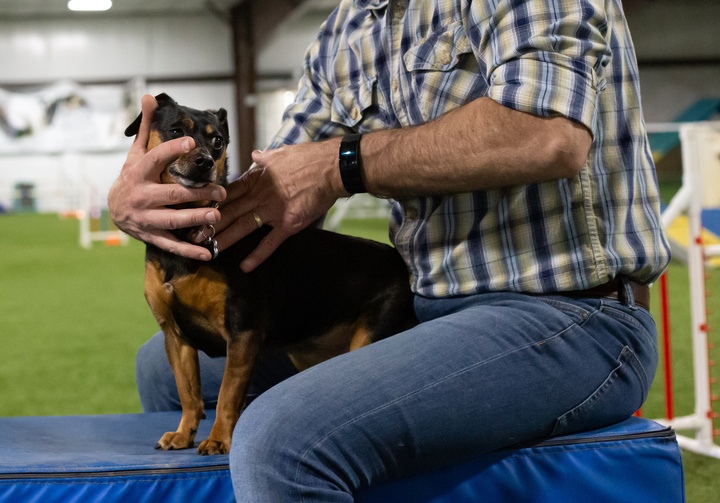Chiropractic medicine, an alternative and complementary therapy, has been practiced since the early 1900s. However, it was not until the mid-1970s that it became fully licensed in the United States. In the 1980s, chiropractic care was introduced as a form of animal treatment, and it rapidly gained popularity in the 1990s.
Today, veterinary chiropractic is a highly sought-after pet therapy that offers a natural, drug-free, and non-invasive solution to alleviate pain and restore balance in the body. Some veterinary practices even have an in-house chiropractor to provide comprehensive complementary and alternative care for their furry patients.
The aim of chiropractic care, whether for humans or animals, is to encourage the body to balance and heal itself. It focuses mainly on the musculoskeletal system, including the network of bones, muscles, and connective tissues that create form and facilitate movement. By realigning the musculoskeletal system, chiropractors can reduce pain and improve mobility and function.
But what exactly can chiropractors do for dogs? According to Dr. Jessica Paige, a certified animal chiropractor and member of the International Veterinary Chiropractic Association ( IVCA)?
“ Chiropractors focus on how the joints of the spine and extremities move. They relate these movements to a dog’s overall health and wellness, bridging the gap between them. When this movement is restricted, dogs can experience repetitive stress injuries and sprains.”
Signs your dog may need to see a chiropractor
Here are some signs to look for that may indicate your canine companion should see an animal chiropractor.
Changes in mobility. If you notice that your dog is having difficulty moving around, limping, favoring one side, or showing signs of stiffness, it could indicate musculoskeletal issues.
Decreased activity levels. A sudden decrease in your dog’s activity levels or reluctance to engage in activities they once enjoyed could signify pain or discomfort.
Altered posture. Pay attention to any changes in your furry friend’s posture. Bank hunching, spine arching, or holding the head at an odd angle could be due to spinal misalignments.
Behavioral changes. Dogs experiencing pain may exhibit changes in behavior, such as irritability, aggression, restlessness, or reluctance to be touched or handled. They may also vocalize more than usual, whine, whimper, or growl when touched in certain areas.
Excessive licking or chewing. Dogs may lick or chew at areas of discomfort in an attempt to alleviate pain. If you notice your dog excessively licking or chewing at specific parts of their body, it could indicate musculoskeletal issues that need attention.
Sensitivity to touch. Your pup may flinch, yelp, or show signs of discomfort when you touch specific areas, such as the spine, neck, or hips, indicating underlying musculoskeletal issues.
Changes in gait. Watch for changes in your dog’s gait, such as a stiff or uneven stride, dragging feet, or crossing of the legs, which may suggest musculoskeletal issues.
Difficulty getting up or lying down. If your dog struggles to rise from a lying position or appears in pain when lying down, it could indicate joint or spine problems.
How can my dog benefit from seeing a chiropractor?
Dr. Amy Attas, a New York-based veterinarian, says that chiropractic care helps,
“Maintain appropriate posture and limb positioning to prevent problems from happening in the future.”
One recent study examined the effectiveness of chiropractic treatment in young Boxers in reducing the probability that they would develop spondylosis, a spinal disease common in several dog breeds. The results showed a positive correlation between chiropractic care and a reduced incidence of spondylosis.
Besides prevention, here are several other ways your fur baby may benefit from regular chiropractic care.
Relief from pain and discomfort. Dogs may experience pain from musculoskeletal issues like misalignments in the spine or joints. Chiropractic adjustments can help alleviate pain by restoring proper alignment and function.
Improved mobility. If your dog has difficulty moving around due to an injury or other condition, chiropractic care can improve mobility by addressing restrictions in movement and enhancing joint flexibility.
Enhanced athletic performance. For active or working dogs, such as those involved in sports, agility, or service tasks, chiropractic adjustments can help optimize their performance by ensuring their musculoskeletal system is functioning at its best.
Injury prevention and rehabilitation. Chiropractic care can help prevent injuries by maintaining proper alignment and balance in your dog’s body. Additionally, if your dog has suffered an injury, chiropractic adjustments can aid in rehabilitation by promoting healing and restoring function.
Management of chronic conditions. Dogs with chronic conditions such as arthritis or hip dysplasia may benefit from chiropractic care as part of their overall treatment plan. Adjustments can help manage pain and improve joint mobility, enhancing your dog’s quality of life.
Support for senior dogs. Older dogs often experience age-related issues such as stiffness, decreased mobility, and arthritis. Chiropractic care can be particularly beneficial for senior dogs by helping to alleviate these symptoms and improve overall comfort and well-being.
How to find a veterinary chiropractor
Because your four-legged friend deserves the best, it is a good idea to locate a chiropractor who has been certified in animal care. The American Veterinary Chiropractic Association is the primary national credential in North America. They offer a certification program and have a doctor search option on their website. Veterinary practices, especially those more holistic in nature, can also provide referrals.






